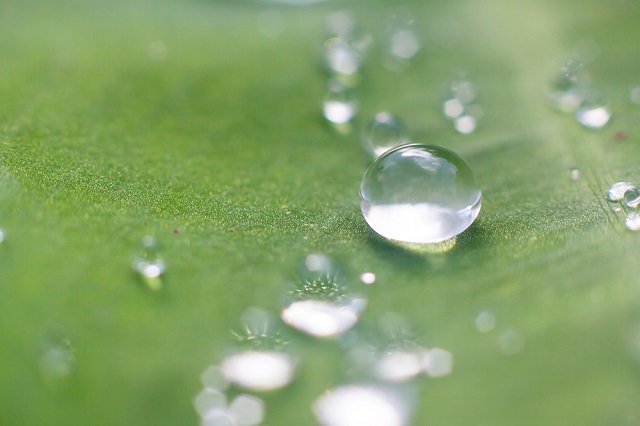Dec 11 2015
A new type of super-hydrophobic coating has been developed. The hydrocarbon-based coating, which is cheap to produce and environmentally friendly, could replace fluorocarbons which are currently used as a water repellent.

A lotus leaf repels a droplet of water - Siriwat | Shutterstock
Lotus leaves are known to have superhydrophobic surfaces. Taking inspiration from lotus leaves the scientists attempted to imitate the plant’s water-repelling properties and ultimately developed the hydrocarbon-based materials.
Nature knows how to make these materials and stay environmentally friendly. Our job has been to figure out how and why, and to emulate that.
Andrew Barron - Rice University
The team from Rice University developed and tested a branched hydrocarbon, low-surface energy material (LSEM) and used modified carboxylic acids to coat aluminum oxide nanoparticles, all of which can be produced easily.
The modified carboxylic acids included highly branched hydrocarbon chains which have a sharp and pointed structure. The chains make the surface rough and 'protect' it from water. The roughness traps air and reduces the contact between the water droplets and the surface enabling the droplets to slide off easily.
The newly developed material could be a green alternative to the toxic and expensive fluorocarbons which are often used in superhydrophobic applications. The material is cheap to produce and can be applied to a wide range of surfaces using techniques that are already used commonly such as spin- and spray-coating.
Superhydrophobic coating protects without the price
A material can be superhydrophobic only if its contact angle to water is greater than 150 degrees. The angle of contact is the angle where the water surface meets the material’s surface. If the beading is higher, then the angle would also be higher. An angle of 180 degrees classifies a sphere merely touching the surface, while an angle of 0 degrees is essentially a puddle.
Barron added that the branched hydrocarbon LSEM is equivalent to the superior fluorocarbon-based superhydrophobic coatings, and has an angle of roughly 155 degrees. It was observed that the material was able to retain its qualities even when different coating techniques and varied curing temperatures were used. The new material could be applied in friction-reducing coatings that are often used in marine applications. In such applications, there is an international accord to protect water from fluorocarbons and other potentially dangerous additives.
The textured surfaces of other superhydrophobic coatings are often damaged and thus reduce the hydrophobic nature. Our material has a more random hierarchical structure that can sustain damage and maintain its effects.
Andrew Barron - Rice University
Barron informed that the researchers are planning to enhance the adhesion properties of the new material to different types of substrates. The team is also exploring other surface protecting applications at a commercial level.
The research was funded by the Welsh Government Sêr Cymru Program and the Robert A. Welch Foundation.